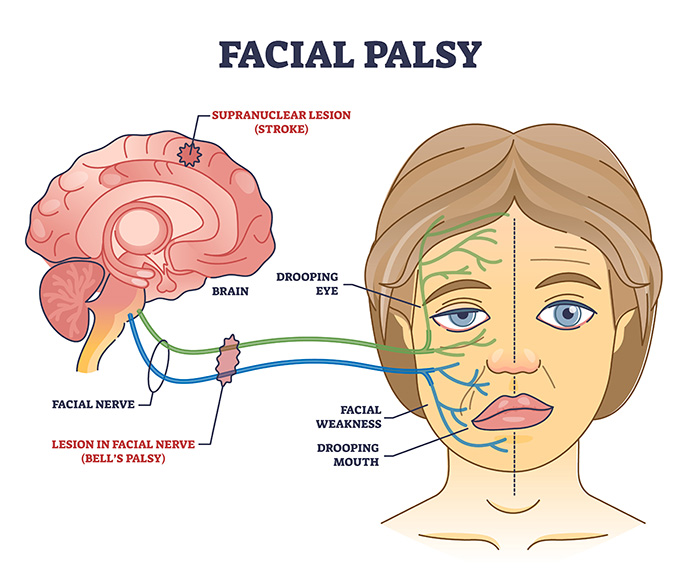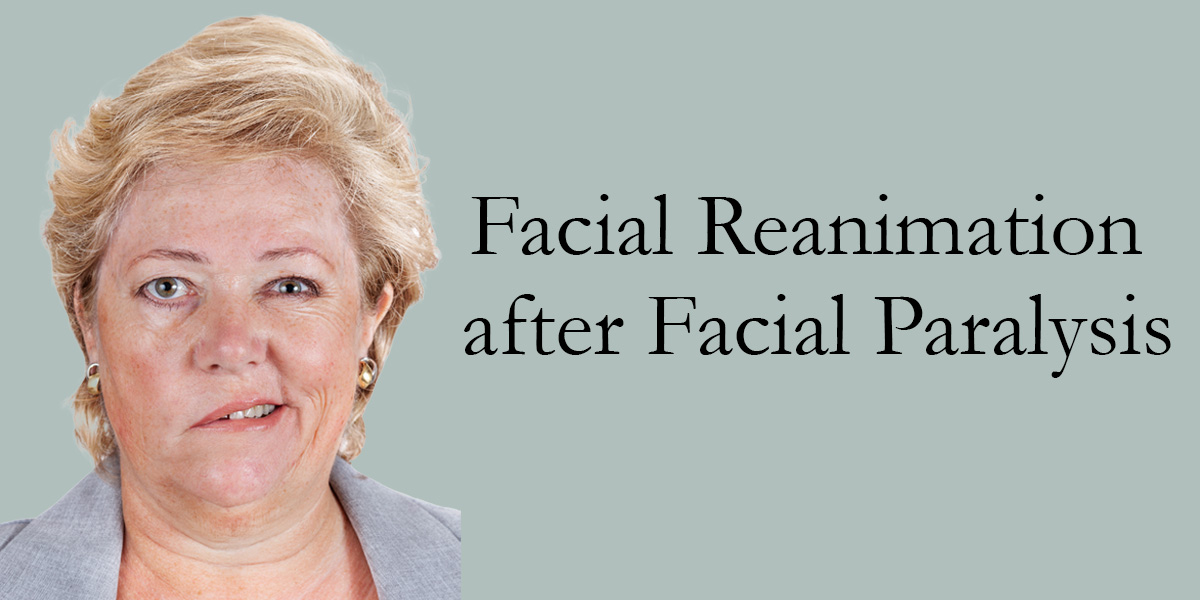Facial Reanimation After Facial Paralysis in Houston
Facial paralysis can profoundly impact your appearance, expression, and quality of life. At the Texas Center for Facial Plastic Surgery, we specialize in state-of-the-art facial reanimation procedures designed to restore movement, symmetry, and function for patients living with facial paralysis.
Understanding Facial Paralysis
Facial paralysis occurs when the nerves controlling the muscles of facial expression are damaged or impaired. This condition can result from various causes, including Bell’s palsy, trauma, tumor resection, infections, or neurological diseases. Facial paralysis affects blinking, smiling, speaking, and other essential functions, and can lead to emotional and social challenges.
Our Facial Reanimation Expertise
Our board-certified surgeons, Dr. Tang Ho and Dr. W. Katherine Kao, are experienced in advanced microsurgical and reconstructive techniques to restore dynamic facial movement. Using nerve grafting, muscle transfers, and static sling procedures, we tailor treatment plans to your individual needs and goals.
Treatment Options for Facial Paralysis Include:
- Nerve Repair and Grafting: Direct nerve repair or interpositional nerve grafts to restore nerve continuity.
- Nerve Transfers: Redirecting nearby healthy nerves, such as the masseteric or hypoglossal nerve, to reinnervate facial muscles.
- Muscle Transfers: Free functional muscle transfer from other parts of the body to replace paralyzed facial muscles.
- Static Procedures: Sling suspensions or eyelid weight implants to improve facial symmetry and protect the eye when movement cannot be restored.
- Physical Therapy: Customized facial rehabilitation to retrain muscles and optimize results.
Our Approach to Facial Reanimation
- Comprehensive Evaluation: We perform detailed clinical assessments and imaging studies to understand the extent of nerve and muscle dysfunction.
- Personalized Surgical Planning: Our surgeons develop a customized plan considering your paralysis duration, cause, and expectations.
- Innovative Surgery: Employing microsurgical techniques, we restore movement and improve facial symmetry.
- Postoperative Care & Therapy: Facial reanimation success relies on postoperative rehabilitation and ongoing support.
Patient Care and Support
We recognize the emotional and functional impact of facial paralysis. Our multidisciplinary team provides compassionate care, education, and long-term follow-up to guide you through recovery.
Contact the Texas Center for Facial Plastic Surgery
To learn more about facial reanimation options or to schedule a consultation, please fill out our online appointment request form. Take the first step toward restoring your facial movement and confidence.
Frequently Asked Questions (FAQs)
Q: What causes facial paralysis?
A: Facial paralysis can be caused by viral infections (like Bell’s palsy), trauma, tumors, surgical injury, congenital conditions, or neurological diseases affecting the facial nerve.
Q: Who is a candidate for facial reanimation surgery?
A: Candidates include patients with partial or complete facial paralysis who desire improvement in facial movement and symmetry. The timing and type of surgery depend on the duration and cause of paralysis.
Q: How soon should facial reanimation surgery be performed?
A: Early intervention within 12-18 months of paralysis onset generally offers the best outcomes. However, certain procedures can benefit patients with long-standing paralysis.
Q: What types of facial reanimation procedures are available?
A: Options include nerve repair, nerve transfers, muscle transfers (such as free gracilis muscle transfer), and static procedures. Your surgeon will recommend the best approach based on your specific needs.
Q: What results can I expect from facial reanimation surgery?
A: While results vary, most patients achieve improved facial symmetry, voluntary movement, and enhanced facial expression. Complete restoration may not be possible, but significant functional and aesthetic improvement is typical.
Q: What are the risks of facial reanimation surgery?
A: Risks include infection, bleeding, nerve injury, muscle weakness, and anesthesia complications. Our surgeons discuss all risks and benefits before proceeding.
Q: How long is the recovery period?
A: Recovery varies by procedure but often includes several weeks of healing and months of physical therapy to retrain facial muscles. Regular follow-up visits are essential.
Q: Will I need physical therapy after surgery?
A: Yes, facial rehabilitation is vital to optimize muscle function and coordination following surgery. Our team can guide you through specialized therapy programs.
Q: Can facial reanimation improve my ability to blink and protect my eye?
A: Yes, surgery can restore eyelid movement or provide static support to protect the eye and improve blinking, reducing dryness and irritation.
Q: Is facial reanimation surgery covered by insurance?
A: Many reconstructive procedures for facial paralysis are covered as medically necessary. Our staff can assist with insurance verification and authorization.
Q: How do I schedule a consultation?
A: To speak with one of our specialists, call or fill out our online appointment request form. We are here to provide expert care and support throughout your journey.


